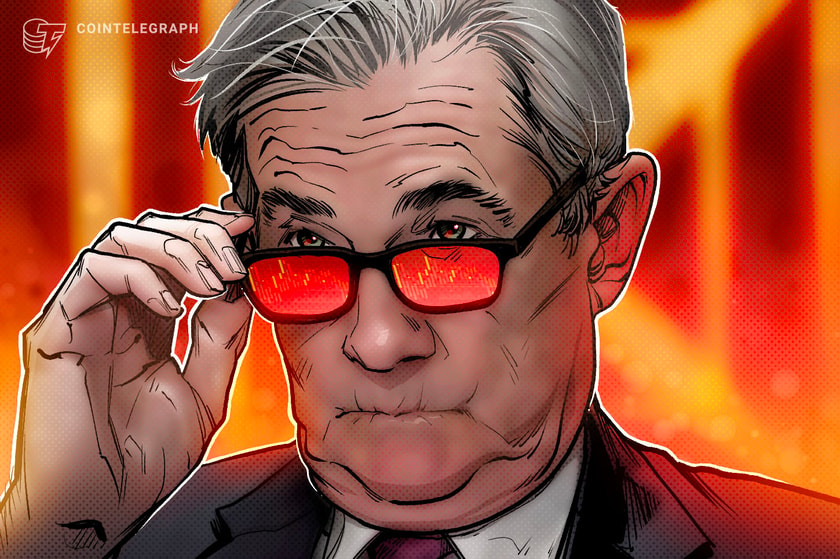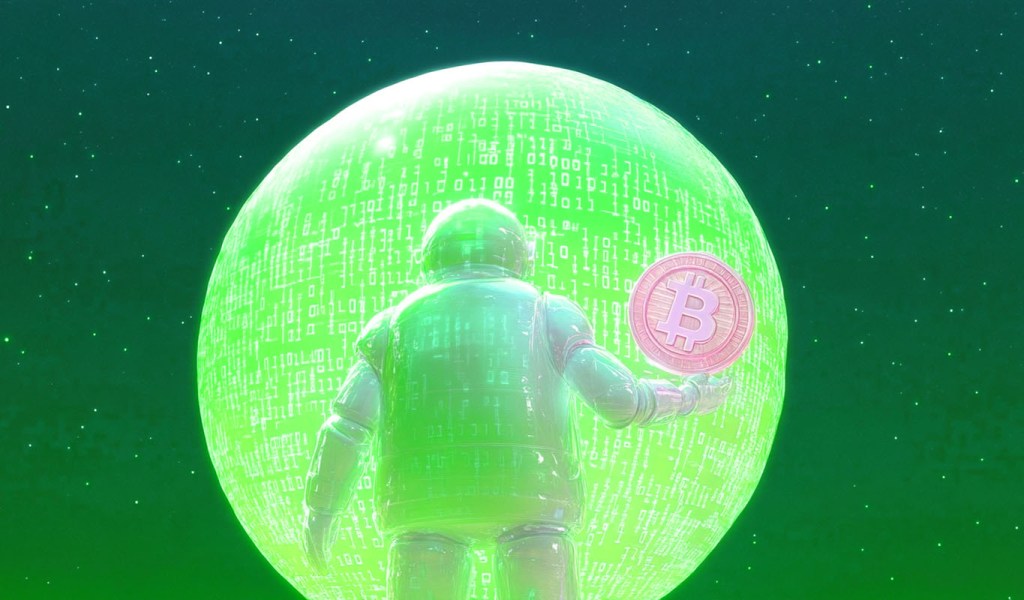
Why is Jerome Powell gaslighting us about the odds of recession?

Economic data seems to indicate an economic slowdown is inevitable. So why is Fed Chairman Jerome Powell trying to gaslight Americans?
Over the last 12 months, market analysts and commentators have relentlessly predicted that the United States is heading for a recession. However, the U.S. economy has been remarkably resilient and defied the forecasts. Indeed, we now have the U.S. Federal Reserve discounting a recession from its current modeling, as Fed Chair Jerome Powell emphasized at the Fed’s July press conference.
There is, however, much more to this story.
For many, the fastest increases in interest rates ever, record-high inflation and the unexpected banking collapses of Silvergate Bank, Signature Bank, First Republic and, most recently, Pacific Western are major reasons to cite indicating a recession is close.
Related: The Federal Reserve’s pursuit of a ‘reverse wealth effect’ is undermining crypto
The technical definition of a recession is two straight quarters of declining gross domestic product (GDP). Still, the real test is a significant decline in economic activity that spreads across the economy and includes employment, consumer spending, retail sales and industrial production.
U.S. GDP declined in both the first and second quarters of 2022. The drop can be attributed to the changes in trade and business inventories, which don’t necessarily reflect underlying economic health. Moreover, the labor market remains strong, consumer confidence is improving, and retail sales are increasing again. These are all signs that the economy remains strong, and there is division on whether a recession is inevitable in this unusual economic environment.
In the third quarter of 2022, GDP growth was 3.2%; in Q4, 2.6%; and in Q1, 2%. As such, we were already in a technical recession. The latest GDP numbers released on July 27 show the U.S. economy grew by 2.4% in the second quarter of this year — an uptick.

Does that mean we’re out of the woods? As ever, it’s just not that simple. It seems clear we are already in a technical recession. Yet, the healthy economic picture doesn’t track with this. Are we in a whole new economic territory?
Shrinking buffers
During COVID-19, consumers shored up around $2.5 trillion in excess savings from a combination of hunkering down at home and trillions of dollars in Federal stimulus packages designed to keep workers afloat despite layoffs and businesses closing. However, that cushion has been slowly depleted to around $1.5 trillion due to high, rapidly increasing interest rates and stubborn inflation, according to Moody Analytics.
Nonetheless, there is still a lot of pent-up demand among consumers. Recently, we’ve seen a surge in spending, while consumers are now carrying the highest levels of household debt ever. Along with increasing housing prices — despite rising interest rates — and companies holding back capital expenditure due to the increasing cost of capital, this debt pile is piling pressure on the U.S. consumer.

As consumer spending makes up 70% of U.S. GDP, it is vital it stays healthy if the U.S. is to avoid a recession. Employment is also a key indicator to watch right now, and the rate of unemployment remains low at 3.6% while wage increases are at 5.7%, but still growing. All this suggests that while the economy is losing steam, we are not in a recession yet.
Most analysts are, though, still expecting a recession in the second half of the year. The expectation is that the tightening of monetary policy that has been implemented over the past year has a long lag effect that hasn’t been fully accounted for. Indeed, Raphael Bostic at the Atlanta Fed estimates it could take 18 to 24 months to see the full effect of this tightening cycle in the economy.
Yields don’t lie
At the same time, banks are pulling back lending due to the deposit runs that led to the collapse of several regional banks. We also see an inverted yield curve appearing — one of the most reliable indicators of a coming recession.
Related: What will drive crypto’s likely 2024 bull run?
Normally, interest rates are higher for longer-term bonds than short-term ones, as investors need to be rewarded more as their money is locked in for longer periods. Right now, though, the yield on a two-year Treasury bond is well above that for 10-year bonds and has been for quite some time. This has been a consistent signal of a recession, as investors move money into safer longer-term assets when the economic outlook looks worse, which pushes their prices up and yields down.
Beyond this, as much as headline Consumer Price Index (CPI) inflation has been declining, core inflation (which excludes volatile energy and food prices) remains hot at 4.8% — well above the Fed’s 2% target. While the cost of goods has fallen, the price of services remains high, driven by the tight labor market.
Growing debt
Although higher interest rates have helped bring down inflation, the higher they go and the longer they stay high, the more expensive it gets for companies to invest in innovation and growth. While S&P 500 earnings currently remain strong, eventually this will filter down to the bottom line.
Related: Jerome Powell is prolonging our economic agony
Crucially, higher interest rates also make it more difficult for U.S. consumers to service their debt. Be it credit card balances, mortgage loans or auto loans, all debt is becoming more expensive and reducing disposable income. This will negatively impact the consumer spending that is so vital for the economy and then, in turn, earnings and stock prices for companies.
But retail sales are up and have been on the increase month on month since January 2023. This suggests consumers aren’t slowing down yet and that the U.S. recession might be further into the future than we expect. Ultimately, we cannot deny that the labor market is still strong, and consumer confidence is buoyant for the second month in a row now. This is across all age groups and income segments and is most likely driven by the tight labor market and headline CPI inflation coming down.
Do you feel lucky, JP?
With the Fed having raised interest rates by another 25 basis points to the highest level in 22 years, we are at a pivotal moment. The question is whether hiking will continue at the Fed’s September meeting. After 12 months of solid agreement among policymakers, cracks are appearing in terms of how much more to hike and how long to hold elevated levels.
While markets have been skeptical, an increasing segment of Wall Street seems to believe the Fed is likely to avoid a recession and deliver a “soft landing.” However, as the Atlanta Fed suggests, the long-term impact of the fastest increase in interest rates in history will take considerable time to come through.
The FOMC seems set on its path, however, and with inflation likely to see some upward movement over the summer due to post-pandemic “revenge” spending among consumers, this could well lead to another rate hike in September. High and elevated rates will, though, impact capital expenditure. Indeed, access to capital is the single biggest concern for businesses today, with three-quarters of small and medium-sized enterprises already struggling.
In the face of this mounting pressure, an economic slowdown seems inevitable. Indeed, Powell stated after the July Fed meeting that softening, “below trend” growth was even necessary to get inflation under control.
Now, then, the only question is around the rate of that softening, which is highly dependent on what the Fed does next.
This article is for general information purposes and is not intended to be and should not be taken as legal or investment advice. The views, thoughts, and opinions expressed here are the author’s alone and do not necessarily reflect or represent the views and opinions of Cointelegraph.
Go to Source
Author: Oliver Rust









